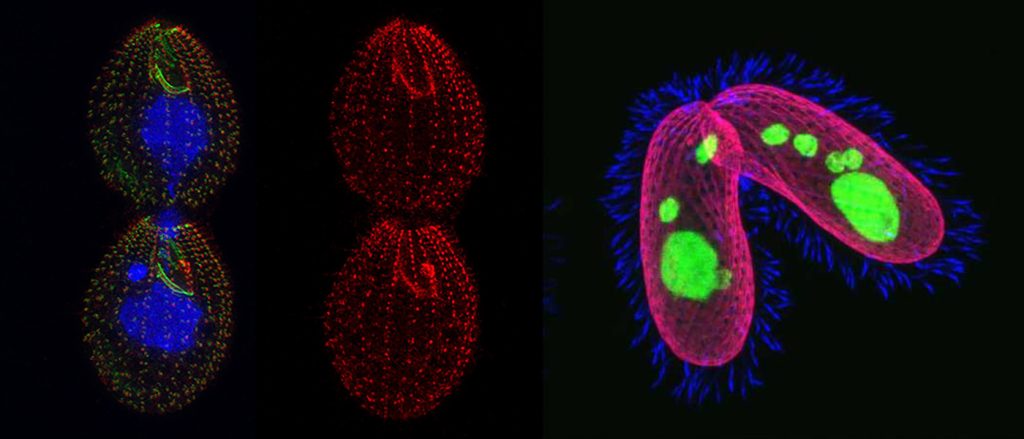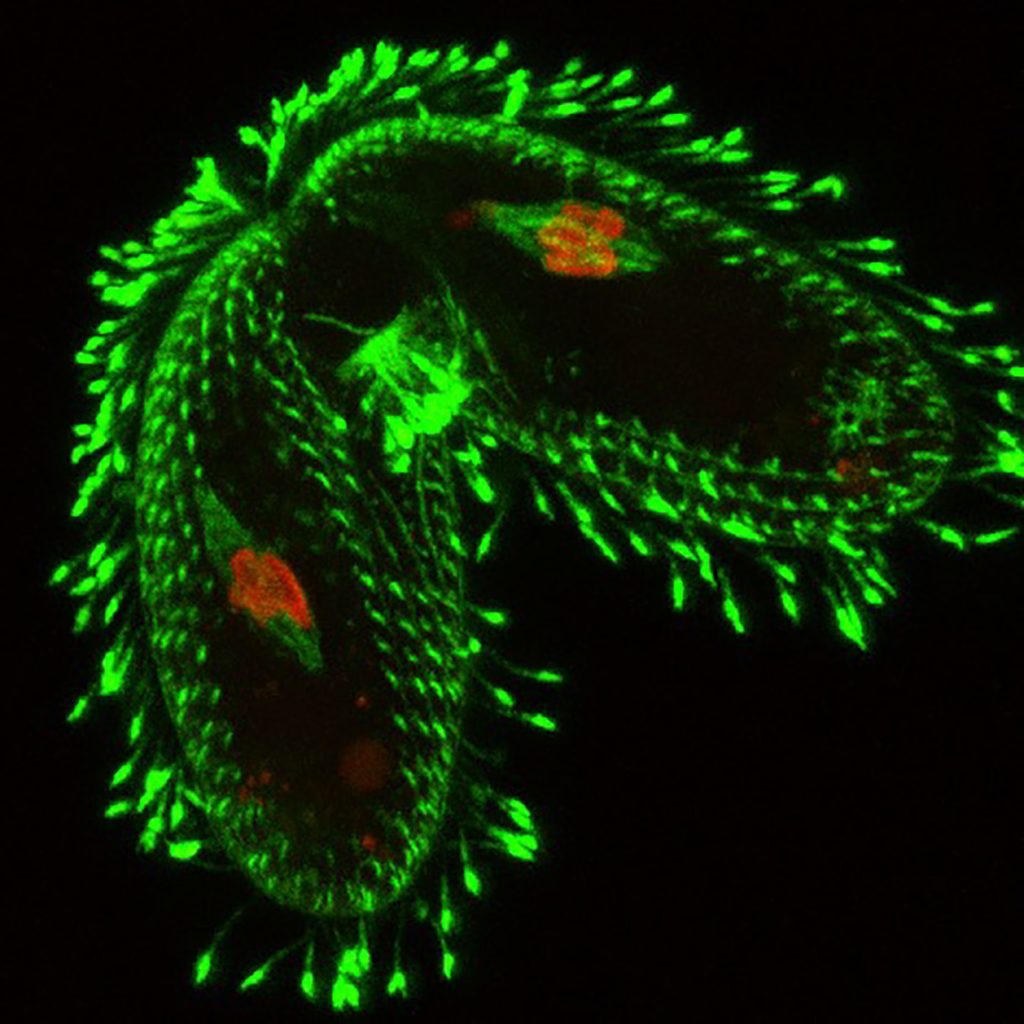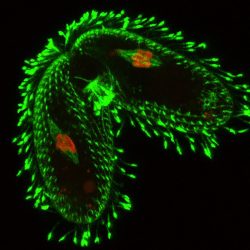Tetrahymena thermophila is a unicellular, ciliated freshwater protozoan. It is well suited for undergraduate research in that cells can be grown overnight to densities of 100,000 cells per ml or more. These cells exhibit a wide repertoire of behaviors that serve as model systems for investigative analysis.
The “Searchable Ciliate” is a website that can serve as a resource for accessing information about Tetrahymena‘s rich biological legacy.


and micronuclear chromosomes
{antibody to phosphorylated micronuclear Histone H1 (red)}.
Our laboratory has embarked upon a molecular/ genetic analysis of both Pattern Formation during the cell’s asexual reproduction (by binary fission) and the mating biology of Tetrahymena during Conjugation. Tetrahymena can be induced to mate in large synchronous cultures. Nuclear and chromosomal activities can be monitored with DAPI staining and fluorescence microscopy, or in real-time with Nomarski interference microscopy. Membrane and cytoskeletal dynamics can be followed using indirect immuno-fluorescence or in living cells by driving expression of a variety of GFP-tagged gene products.
